Arriving at St James Park around 2 p.m. on Sunday, onlookers at Sunday’s Occupy Toronto General Assembly would have seen an ocean of spirit fingers, as a self-described Raging Granny asserted through the human microphone, “We are involved in a new way of thinking.”
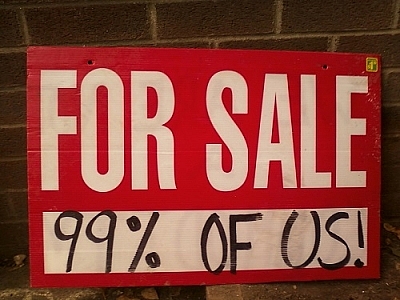
Scanning the park adjacent to St James Church, located at the intersection of King and Church Streets, observers see a food tent, media and logistics stations, a legal centre, a free school and skill sharing centre, rows of portable outhouses with a hand-washing station, and of course, the tent city, where at the time, 50, perhaps even 75 tents were erected. At the centre of it all, sits the gazebo where the General Assemblies are held.
The park is located a few blocks from Bay Street, on the eastern edge of the financial district. On Saturday, the group had met at King and Bay Streets, keeping the location of the occupation undecided to prevent a police blockade. Once the occupiers found out which parks in the area were not being blockaded, they moved in.
Boris Giller, a volunteer on the media committee, noted that the group was currently “working on improving the process of the General Assembly.” For example, since it is open to everybody, everyone can speak, so a speaker’s list is kept to ensure everyone can have a turn.
Browse the Occupy Toronto gallery — click any image above to view a full-sized version in a pop-up carousel.
Moreover, a meeting was being planned for later on in the day to address the matter of disability and participation, in keeping with the movement’s inclusive policy. An outreach committee was also formed, and marshals trained to keep out substances, maintain the peace and relieve confrontations when opposing points of view arise.
Indeed, because the movement represents a large diversity and pluralism of voices, the Occupy movement has sometimes been criticized for expressing conflicting opinions, but Giller feels this is actually the movement’s strong point. “Many people here have no political affiliation,” he says. “No one is stopping others’ voices.”
Giller says the movement is well organized because it has learned from its Wall Street counterpart. Participants know what supplies they need, they have learned how to identify provocateurs, they know they must come up with a unifying message and they know that they must maintain cleanliness to stay in the park.
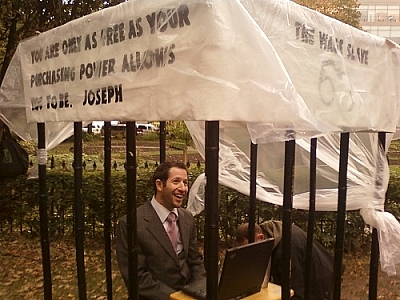
It is evident that many are suspicious of the police in light of last year’s G20 fiasco. Occupiers worry that the police will try to forcefully remove people, but “they have been very courteous so far,” says Giller. Still, Giller says the legal team has taken a proactive approach to letting people know their rights and to sharing strategies for dealing with the police.
Workers employed in the finance sector exhibit different concerns. Some wear masks to safeguard their identities. One masked occupier — who wished to remain anonymous — expressed solidarity with the movement but had reservations. “I don’t want to get fired over this,” she said.
According to Giller, the movement’s main goal is to create a political dialogue and to raise awareness of the various issues surrounding the movement. “If we are able to spread the message that the banking system is corrupt and is influenced by politics, then I will consider that a win,” he says.
For Holli-Lynne Elash of the London chapter of the Ontario Public Service Employees Union (OPSEU), supporting the movement means repudiating disparity of wealth and attacks on labour and workers. Elash, who works in developmental disabilities, says she felt compelled to respond to a call-to-action email from her union president because “services are being degraded.” She says that wait lists for disability housing have gone from zero to over 7,000 since Dalton McGuinty first came into power.
Browse the Occupy Toronto — Posters gallery — click any image above to view a full-sized version in a pop-up carousel.
Signs and posters scattered around the park demonstrate the array of other movements finding the Occupy movement relevant. Other than those targeting corporate greed, taxes, and wealth disparity, anti-war and environmental activists are among the most prominent. Phil Aroneanu of 350.org remarks in an email sent to supporters, “Just about every problem we now face — from foreclosures to the climate crisis — is made worse by unchecked corporate greed and a corrupt political process.”
On this second day of the occupation in Toronto, participants seemed eager to share their message. Discussion at the General Assembly turned to the topic of a march. Some were in favour of going out into the streets to raise awareness about the occupation and its raison d’être. Others feared losing the park to the police and preferred staying put, arguing that Bay Street wasn’t open to see the march and that its effect would be reduced. At about 3 p.m., a speaker announced that if the occupiers provided the location and route of the march, the police would not come into the park. A march to Dundas Square was set to depart at 3:30 p.m.
The occupiers have a simple, clear message to deliver. The Occupy Toronto website states the movement’s goal is to “work towards drastic changes to economic systems that are destroying our economy, social liberties and environment.” Like its American counterparts, the group rejects the fact that one percent of Americans — the 400 richest Americans — control 40 percent of the wealth in the USA. In other words, they have more wealth than half of all Americans combined. The situation is similar in many countries the world over.
The Occupy movement has now spread to over 1,500 cities in 82 countries.
Sources
- From Tahrir Square to Times Square: Protests Erupt in Over 1,500 Cities Worldwide
- Occupy Toronto
- A New Bush Era or a Push Era? (X Rray magazine)
Occupy Toronto Gets Under Way was originally published by Straight Goods News.


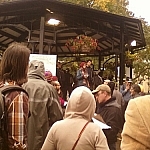
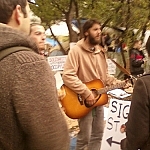
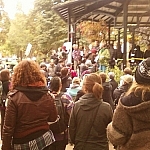

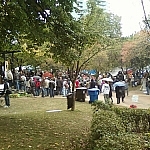

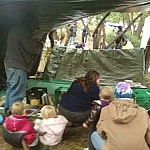
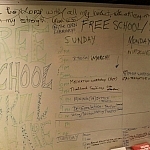
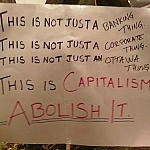
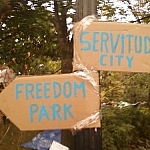
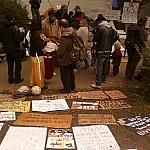
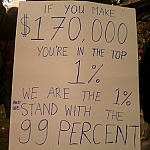
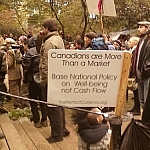
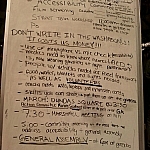
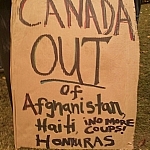

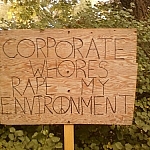
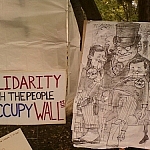



Search Niackery
×